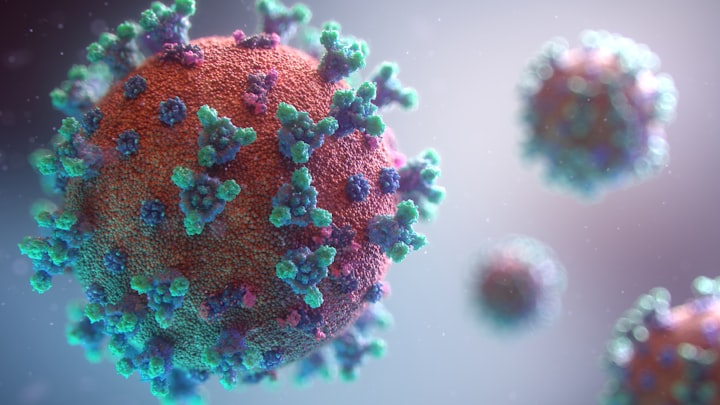Is lyssavirus the deadliest virus on earth that can make you a zombie?
Deadliest Virus on Earth

Now, first we will discuss what the zombies are. A zombie is defined as a dead person brought back to life without the ability to speak or move easily. But over the years, the meaning of the word "zombie" has changed, becoming associated with slavery, voodoo, reincarnation, ghosts, plagues, indifference, radiation, and infections. Zombies can be supernatural, living but under control, or dead but reanimated. They are frequently reanimated in contemporary zombie fiction, but there is still a wide range of them, including slow zombies, running zombies, bursting zombies, spitting and frothing zombies, zombies with weapons, or zombie limbs without bodies. They could have absolutely no memory, personality, or intelligence left at all. They don't all spread disease by biting (sometimes it's by airborne viruses or disease-carrying insects), not all of them are driven to consume human brains (though most seek human flesh), and not all of them were once humans (zombie dogs are another manifestation).

Deadliest Virus on Earth
In the 1970s thousands of Chickenheads rained from the sky in Europe, making foxes and other wildlife confused and very happy. Why? They were filled with a vaccine to fight the deadliest virus known to humanity – since the 1930s a rabies epidemic had been sweeping across wildlife populations in Europe and humans wanted to finally get rid of the virus once and for all. Rabies is named after Lyssa, the ancient Greek spirit of mad rage,
and has been haunting us for at least 4000 years. It can turn animals into angry beasts
and humans into zombies that fear water. But what makes Lyssa fascinating is not just how
bizarre and deadly its infection is, but also how incredibly good it is at avoiding our defenses.
Viruses exist on the edge between life and death, hardly more than a few genetic instructions that
need living cells to multiply. The lyssavirus is simple even for a virus: It has only five genes,
that is the instructions for five proteins that let it solve complex problems: Infect a mammal,
avoid its immune system, travel to its brain, make more of itself and infect new hosts.

Let's see what happens if you get infected:-
It all starts with a bite, most likely by a dog carrying millions of viruses in its saliva,
pushing them deep into the tissue. The goal is your nerve cells, your neurons. They are living
electrochemical wires, transferring signals throughout your body, and can stretch for up
to 1.5 meters, with their cellular machinery on one end and a terminal on the other.
The terminal is where cells talk to each other, by passing chemicals that convey information.
Lyssa probably binds to the receptors that are crucial for this process
and slips inside the unsuspecting nerve cells.
Inside, the virus has to solve a big problem. It needs to get to the cellular machinery to
take over the cell and make more viruses – and because neurons are pretty long,
this can be far away. There is a solution at hand though:
Cells have microtubules spanning their insides that give them structural integrity.
But they also provide a track system for a specialized delivery system:
Dynein motors are actual motors that use energy and deliver packages. They are made from 50 different proteins, ten times more than the virus, and look like a little pair of shoes. Lyssa uses one of its five proteins to hijack this amazing system and order it to head for the nucleus.
What is the immune system doing to prevent all of that? Well, unfortunately not much.
Usually when a virus attacks your civilian cells are crucial in activating your immune response.
They notice that they have been infected and release hundreds of thousands of a special family of proteins: The interferons that, well, interfere with viruses. We’ll have to simplify a lot, but in a nutshell, Interferons alert your immune system to make antivirus weapons.
But they do much more: they tell civilian cells to turn down their protein factories
for a while – which means that viruses can’t replicate efficiently anymore.
And interferons tell your cells to become super transparent, which is important, because how Can your immune cells notice that your civilian cells are infected when viruses hide inside them?
Your body solves this by creating display windows into their insides, called MHC class I molecules. Cells constantly produce stuff to stay alive,
and to showcase to your immune cells what is going on inside them, they take random samples of their products and put them into these tiny display windows to give a peek inside. Interferon tells your cells to make WAY more display windows and become super transparent.
If a cell is infected and forced to make virus parts, your immune cells will see these parts
in a window and order the infected cell to kill itself – and all the viruses trapped
within. This is one of the most powerful methods of wiping out a viral infection.
Unfortunately Lyssa blocks your neurons from making interferons and stays basically
invisible to your immune system. In contrast to many other viruses, when it replicates,
it doesn’t kill its host, which would also trigger alarm systems.
Instead it stealthily jumps from neuron to neuron, very slowly making its way to your brain.
This phase can take weeks to months and very rarely even years
and depends on a bunch of things, like if the bite was in your face or foot or how many viruses got into your muscles. Lyssa is a patient monster. Until it reaches its goal: Your brainstem. Finally, the immune system catches on that something isn’t right
and reacts. It dispatches some of your most powerful antivirus cells, Killer T Cells,
to seek and kill infected cells and wipe out the enemy. In other viral infections this would be a turning point, but in rabies the T cells are rushing towards their doom. Simple Lyssa with
its 5 proteins plays a uno reverse card, using the immune system’s ingenuity against itself.
Your central nervous system is a very fragile part of your body and so the immune system has to be very careful. A few haywire immune cells in your brain is a quick way to die.
So they aren’t free to enter your nervous system, they have to be be invited in
and can be kicked out. To protect themselves, your nerve cells can order T Cells to self-destruct, if they think they are overreacting. And Lyssa figured out a way to make infected neurons express this order. So as your powerful defense cells arrive – they are ordered to commit suicide.
Now the virus infiltrates the brain stem. Once this stage is reached you are going to die.

How Lyssa Kills:-
One of the most irritating things about the Lyssavirus is that we still don’t
know exactly how and why an infected person dies.
Our usual idea of viruses causing damage is by multiplying rapidly,
killing their host cells once they have made enough copies, triggering a massive immune
reaction that also does a lot of damage. But this doesn’t seem to be what happens here.
Brain tissue of rabies patients shows minimal, sometimes non-existent damage.
Instead of murdering everything in sight, it is currently thought that lyssa wreaks havoc
by messing up the neuron communication inside your brain, so much so, that it can’t function anymore.
It attacks the brain and leads to symptoms like confusion, aggression and paralysis.
Now the virus begins to leave. Still traveling through neurons, it migrates away from the brain
and heads for the salivary glands. This is remarkable, because after travelling in one
direction the virus reverses its course. After decades of study we don’t know how this works.
Lyssa ends up saturating your saliva ready for the irate mammal to bite another
and repeat the cycle. While this seems like the beginning of a Zombie outbreak,
Luckily there are no known cases of a human biting another and spreading rabies this way.
Now the end is near. You are rapidly developing encephalitis, a swelling of the brain with many unpleasant neurological symptoms, from lethargy to paralysis. Slowly at first, and then suddenly,
organ after organ fails as you slip into a coma. There is no known effective therapy, barely anyone has ever survived Lyssa once symptoms begin to show. It is by far the deadliest virus we know.
Except, there is actually something that could save you – a vaccine.
Rabies was one of the first diseases humans developed a vaccine for.
As vaccines do, it prepares your immune system for a future attack, so it has the right weapons ready in high numbers. The horrific tricks of simple Lyssa don’t work once you are vaccinated. And the vaccine is special for another reason – because Lyssa is so slow in the first few weeks, it can be given to you after you have been exposed. So you can still be vaccinated after you have been
bitten by an animal. Which is super important if you’ve had contact with a sick wild animal,
say a bat, because you often don’t even notice a bite from tiny teeth.
Rabies is a monster. One that has followed our species around for thousands of years,
that our ancestors were terrified of and rightly so. It still kills around 60,000 people each year,
almost half of them are children. We are far from eradicating this monster – It lurks in the
shadows, in forests and animals of all kinds, ready to return in greater numbers if we ever
forget how to keep it at bay, or if we continue the trend of being suspicious of vaccines.
Let us hope that one day humanity slays this monster,
so it can become like most monsters: Part of our imagination.
There are much deeper levels of knowledge to explore about
rabies than the glimpse we just showed you.





Comments
There are no comments for this story
Be the first to respond and start the conversation.